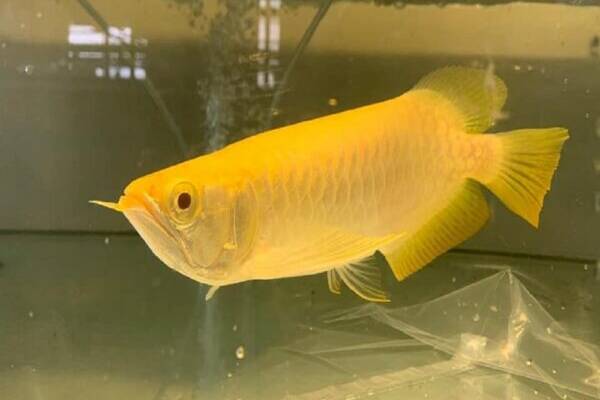Description
Blood Red Arowana for Sale – The Ultimate Exotic Fish for Your Aquarium
Are you looking to add a touch of elegance and rarity to your aquarium? Look no further than the Blood Red Arowana, one of the most sought-after exotic fish in the world. At Ranch of Exotic Breed, we take pride in offering premium-quality Blood Red Arowanas for sale, ensuring you get a healthy and vibrant addition to your collection.
In this article, we’ll dive into everything you need to know about the Blood Red Arowana, including its unique features, care requirements, and why it’s a prized possession for aquarium enthusiasts. Plus, we’ve included a helpful FAQ section to answer all your questions.
The Blood-Red Arowana is a majestic freshwater fish known for its striking red scales and graceful movements. Native to Southeast Asia, this exotic fish symbolizes wealth, prosperity, and good fortune in many cultures. At Ranch of Exotic Breed, we offer handpicked, healthy Blood Red Arowanas that are perfect for both beginner and experienced aquarists. Each fish is carefully bred and raised in optimal conditions to ensure its vibrant color and robust health.
Why Choose the Blood Red Arowana?
Stunning Appearance: The Blood-Red Arowana is renowned for its deep red scales that shimmer under the light, making it a centerpiece in any aquarium.
Symbol of Prosperity: In Feng Shui and Asian cultures, the Arowana is believed to bring good luck and wealth, making it a popular choice for collectors.
Long Lifespan: With proper care, these fish can live up to 20 years, providing long-term companionship and beauty.
Rarity: The Blood-Red Arowana is a rare and highly coveted species, making it a valuable addition to your collection.
Caring for Your Blood Red Arowana
To ensure your Blood-Red Arowana thrives, it’s essential to provide the right environment and care. Here are some key tips:
Tank Requirements:
Arowanas are large fish and require a spacious tank. A minimum of 250 gallons is recommended for adult Arowanas.
Ensure the tank has a secure lid, as Arowanas are known to jump.
Water Conditions:
Maintain a water temperature between 75°F and 86°F.
Keep the pH level between 6.0 and 7.5.
Regularly test and maintain water quality to prevent diseases.
Diet:
ultimate blood red asian arowana are carnivorous and thrive on a diet of live or frozen foods such as shrimp, crickets, and small fish.
Supplement their diet with high-quality pellets to ensure balanced nutrition.
Tank Mates:
Arowanas are solitary fish and may be aggressive toward smaller tank mates. Choose larger, non-aggressive species if you plan to keep them in a community tank.
Why Buy from Ranch of Exotic Breed?
At Ranch of Exotic Breed, we are passionate about providing our customers with the finest exotic fish. Here’s why you should choose us:
Healthy and Vibrant Fish: Our Blood Red Arowanas are bred and raised in optimal conditions, ensuring they are healthy and vibrant.
Expert Guidance: Our team of experts is available to provide guidance on caring for your Arowana, ensuring it thrives in its new home.
Secure Shipping: We offer safe and reliable shipping options to deliver your fish directly to your doorstep.
Customer Satisfaction: Your satisfaction is our priority. We are committed to providing a seamless shopping experience from start to finish.
FAQs About Blood Red Arowana
1. How much does a Blood Red Arowana cost?
The price of a Blood Red Arowana varies depending on its size, age, and coloration. At Ranch of Exotic Breed, our prices start at $350 to $5,000 for premium specimens.
2. How big do Blood Red Arowanas grow?
Blood Red Arowanas can grow up to 36 inches in length, making them one of the largest freshwater fish species.
3. Are Blood Red Arowanas difficult to care for?
While they require specific care, Blood Red Arowanas are relatively hardy fish. With the right tank setup, diet, and maintenance, they can thrive in captivity.
4. Can I keep a Blood Red Arowana with other fish?
Arowanas are best kept alone or with larger, non-aggressive fish. Avoid keeping them with smaller fish, as they may see them as prey.
5. Do Blood Red Arowanas require special lighting?
While they don’t require special lighting, using LED lights can enhance the vibrant red coloration of their scales.
6. How long does shipping take?
Shipping times vary depending on your location. We use specialized packaging and overnight shipping to ensure your fish arrives safely and quickly.
7. What is the lifespan of a Blood Red Arowana?
With proper care, Blood red arowana for sale can live up to 20 years or more.
8. Do you offer a warranty on your fish?
Yes, we offer a health guarantee on all our fish. If your Arowana arrives in poor condition, contact us immediately for assistance.
Conclusion
The Asian arowana for sale is more than just a fish; it’s a symbol of beauty, prosperity, and rarity. Whether you’re a seasoned aquarist or a beginner, this exotic fish is sure to captivate you with its stunning appearance and graceful presence.
At Ranch of Exotic Breed, we are dedicated to providing you with the highest quality Arowana fish for sale and exceptional customer service. Don’t miss the opportunity to own this magnificent creature – shop now and bring home a piece of aquatic elegance!
Call to Action:
Ready to own a Arowana for sale? Visit our store at Ranch of Exotic Breed today to explore our collection and find the perfect fish for your aquarium. Contact us for more information or to place your order!






Reviews
There are no reviews yet.